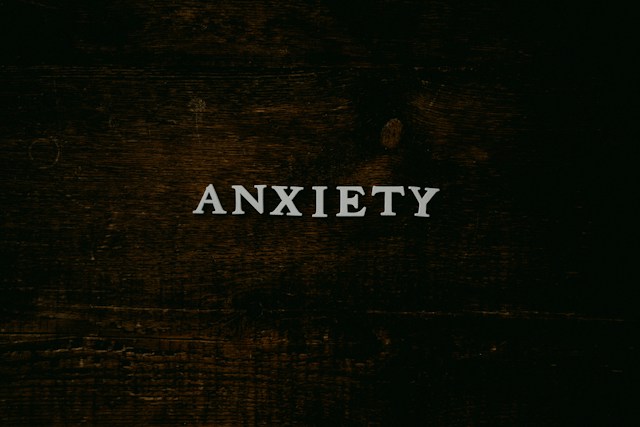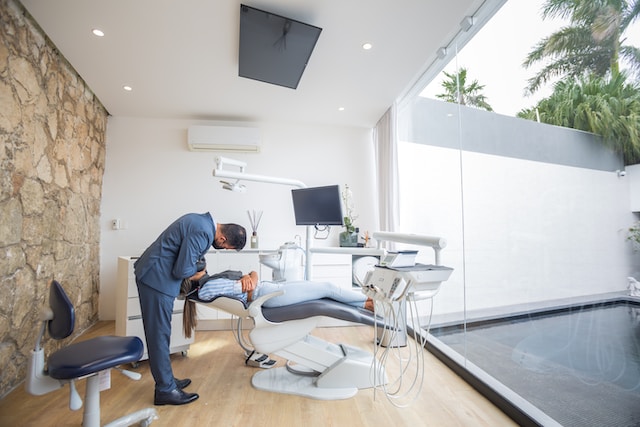Often, people with anxiety have a “fight or flight” response, which speeds up the heart rate and creates physical symptoms like sweating or shaking. Therapy techniques can help slow the body down and manage these reactions.
Cognitive behavioural therapy, or CBT, is one effective therapy for anxiety symptoms by addressing negative thought patterns and irrational beliefs. One technique, “cognitive restructuring,” involves evaluating anxious thoughts to determine their accuracy and validity.
Deep Breathing
One of the most effective ways to calm anxiety is by focusing on slow, deep breathing. This can be done anywhere; even a few breaths can help reduce stress and anxiety symptoms.
Deep breathing exercises are often used in pulmonary rehabilitation programs to help people with lung conditions like COPD and emphysema improve their quality of life. However, they’re also helpful in reducing anxiety and are easy to learn at home.
Anxiety can cause the body to breathe shallowly and rapidly, a pattern called hyperventilation. This disrupts the normal balance of gases in the body and can lead to physical symptoms such as dizziness and lightheadedness. Deep breathing can help rebalance the body’s natural gas exchange.
Several controlled breathing techniques, such as cyclic sighing and the breath focus technique, are useful in reducing anxiety. These breathing techniques are similar to practices you may have learned in yoga, emphasizing the importance of being deliberate about your breath. They can be combined with a calming focus, such as your breath, a mantra, or a sound like an om.
Mindfulness Meditation
Practicing mindfulness can help you learn to accept difficult emotions rather than push them away or dwell on them. This technique also teaches you to observe your thoughts without judgment, which can help identify the underlying causes of your anxiety.
During mindful meditation, you focus on your natural breathing or a word or “mantra” that you repeat silently. You notice subtle body sensations, such as an itch or tingling, and allow them to pass by. You also pay attention to your senses, noticing sights, sounds, smells, tastes, and touches and naming them. You may feel emotions emerge, such as anger or frustration.
Mindfulness meditation can be combined with other therapy techniques to create an effective treatment plan for your anxiety. For example, cognitive behavioral therapy involves recognizing and retraining unhelpful thought patterns, while ecotherapy uses your five senses to experience nature, which can calm you down. If you want to try a more formal mindfulness-based therapy approach, search online for therapists specializing in this type of work. A review of research showed that long-term mindfulness practice produces functional and structural changes in brain areas involved with emotional regulation.
Cognitive Behavioral Therapy
Cognitive Behavioral Therapy (CBT) is an evidence-based psychotherapy that has been proven to be effective for many types of anxiety disorders. Unlike taking medication, which only masks symptoms, CBT addresses the underlying causes of anxiety by changing unhelpful patterns of thinking and behavior.
During treatment, you’ll work with your therapist to identify recognizable mental health goals and retrain your negative thought patterns. This may involve identifying and challenging maladaptive beliefs, engaging in behavioral experiments to empirically test positive thoughts empirically, or practicing mindfulness of emotions by journaling to understand what’s happening in the moment.
You’ll also be introduced to techniques that help you face your fears, like role-playing with a therapist or using exposure exercises, which involve gradually entering situations that cause anxiety (e.g., a fear of heights) until they no longer trigger the same response . These methods can be used individually or in combination. Psychoeducation, including psychoeducation about distorted thinking (e.g., all-or-nothing thinking, jumping to conclusions, assuming the worst), and cognitive restructuring are also commonly used in CBT.
Progressive Muscle Relaxation
Progressive muscle relaxation is a relaxation technique that involves systematically tensing and relaxing different body groups. This teaches the body to differentiate between tension and deep relaxation. It is also a way to increase body awareness. This mindfulness practice has been shown to decrease anxiety, improve sleep quality, and reduce pain for people with chronic medical conditions.
For example, a person might start by squeezing their forehead muscles and holding it for 15 seconds. They would then move on to their neck, jaw, and so on, allowing each group of muscles to relax until they feel the tension fade away. This exercise is an effective tool for reducing anxiety symptoms because it addresses them directly by impacting the fight/flight/freeze response.
When practicing PMR, a person should ensure they are in a quiet and comfortable place. It is helpful to wear light clothing and set aside at least 20 minutes for the exercise. Additionally, a person may want to use technology like a smartwatch or heart rate monitor to see how the relaxation exercise impacts their blood pressure and heart rate.
Guided Imagery
Guided imagery is a practice that helps people use their imagination to reduce anxiety and stress. It is typically used with other relaxation techniques like progressive muscle relaxation. It can be done with the help of a trained practitioner or through a pre-scripted audio recording/app.
It involves imagining yourself in a soothing, peaceful, relaxing scene, like a beach or meadow. You may have experienced or created the scene purely from your imagination. Many people imagine a soothing bath or a peaceful walk in nature, and some even include imagined sounds, scents, and textures to create an immersive experience that helps them relax.
Guided imagery is often used along with therapeutic work, especially in the case of trauma-related concerns or those related to clinical anxiety or depression. It can also be useful for patients undergoing medical treatments, as it allows them to imagine a healthy outcome to their condition that can reduce negative physiological responses. These can include a decrease in blood pressure and heart rate, as well as an increase in mobility for those who suffer from chronic health conditions.




